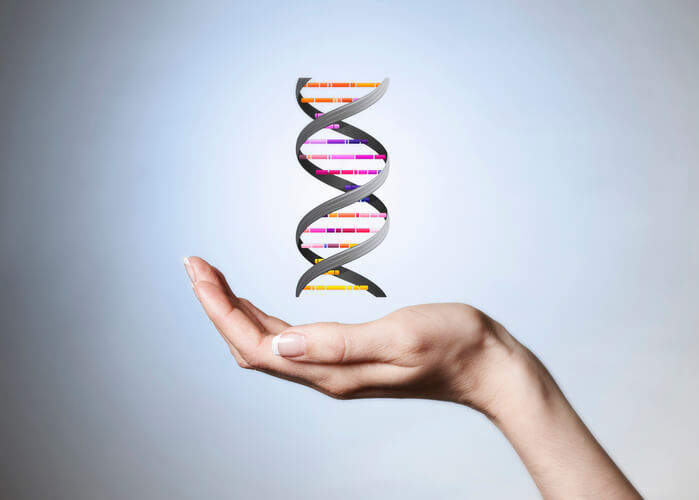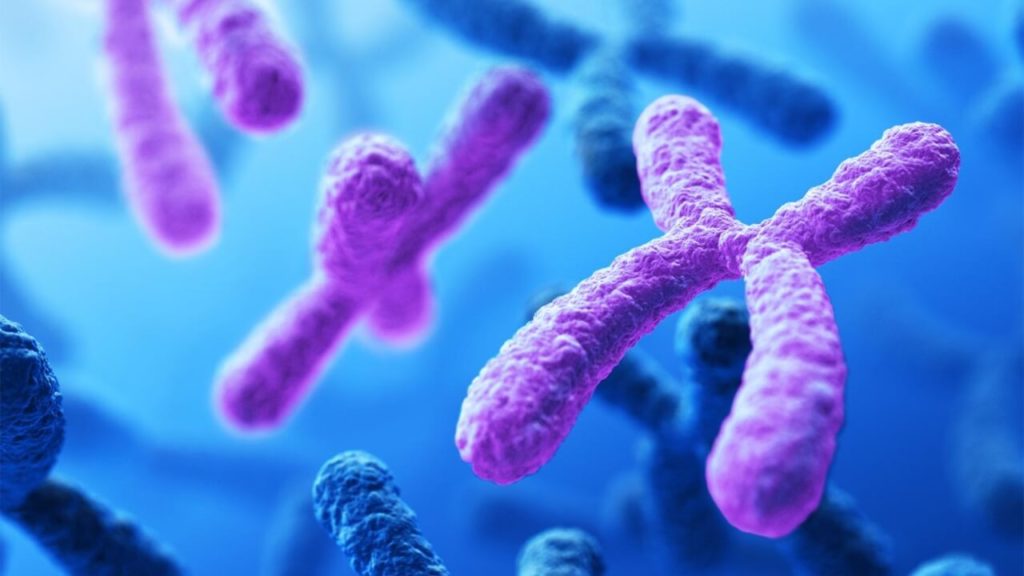DNA is a molecule that contains the instructions an organism needs to develop, live and reproduce. These ‘rules’ are found inside every cell and are passed down from parents to their children.
The structure of DNA can be understood in three stages:
- The chemical structure of DNA – the smallest building blocks
- The double-helix DNA model – the 3D arrangement of the DNA molecule
- The function of DNA – how DNA reproduces and works
1) What is the chemical structure of DNA?
DNA stands for deoxyribonucleic acid. It’s a class of molecule called a nucleic acid.
It is one of the four major groups of molecules in biology. These include proteins, carbohydrates, and fats.
Nucleic acids are named as such because they are found in the nucleus of cells.
They are made up of the smallest units called nucleotides.
The backbone:
DNA structure has a backbone made of sugar and phosphate groups
- Deoxyribose – is a modified form of another sugar called ribose.
- Phosphate – acidic part of the molecule (balances the bases)
The code:
- Nitrogen Base –DNA uses four kinds of nitrogenous bases: adenine (A), guanine (G) cytosine (C), and thymine (T).
- RNA – also contains adenine, guanine and cytosine bases. But instead of thymine, they have another base called uracil (U).
DNA uses nitrogen base like the letters in the alphabet to form a word. The order of nitrogen bases in a DNA sequence forms genes, which in the language of the cell, tells cells how to make proteins.
2) The Double-Helix DNA Structure
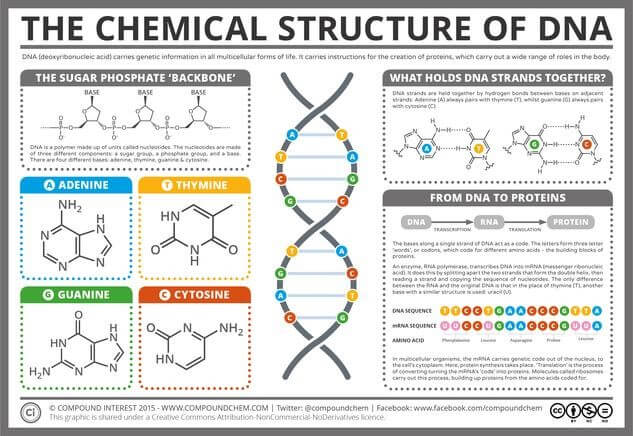
DNA structure forms a two-sided ladder to store a genetic alphabet. Source
Nucleotides create nucleic acid.
Nucleic acid then forms together to create DNA.
What is the double helix of DNA?
We now know the basic chemical structure of DNA. It’s important because it helps explain how DNA functions to create cells.
The next step is to understand how the chemical structure of DNA works.
DNA molecules arrange themselves in a model called the DNA double helix. It’s a 3-D structure that is stored in the nucleus of all cells.
Remember that the phosphate and sugar molecules are the backbones of the ladder. The bases (A, G, C, G) form the rungs of the ladder.
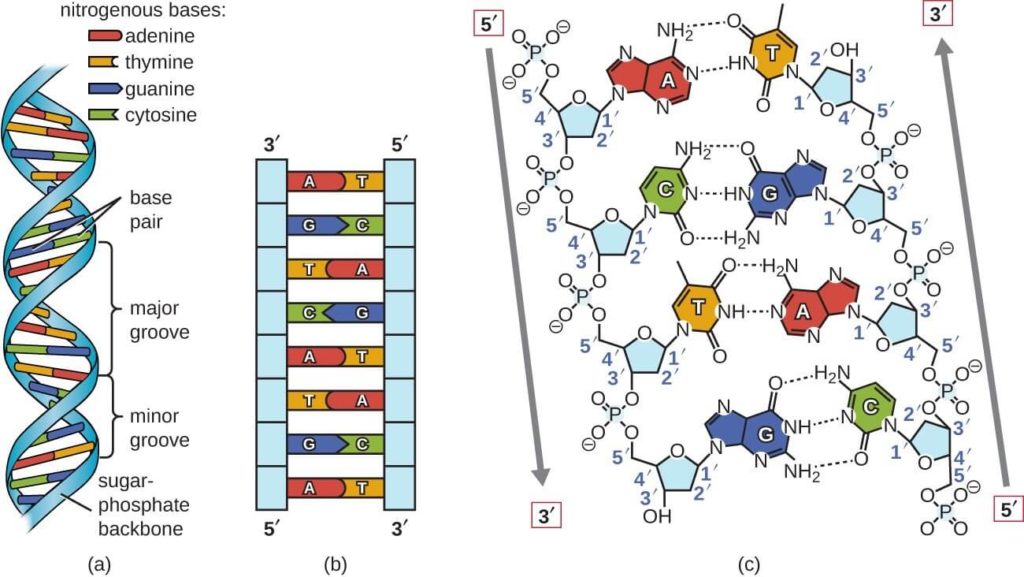
The two-sided ladder formation of the double-helix DNA structure. Source
Why is DNA in a double helix shape?
DNA forms a double helix because the two ladders run opposite to each other. They rotate around a central axis to form a spiraling helix.
This is called an anti-parallel structure. Each strand has a 5′ end and a 3′ end.
The bases on one ladder (or strand) pair with the bases on the other ladder. Adenine (A) pairs with thymine (T), and guanine (G) pairs with cytosine (C).
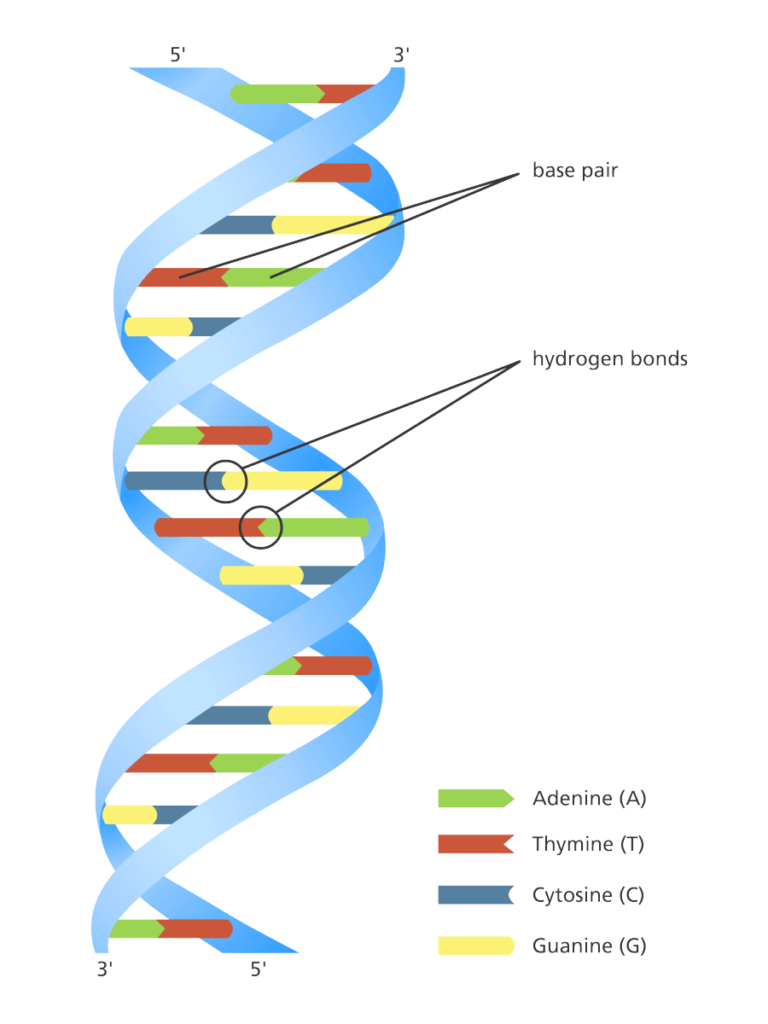
The double helix structure of DNA. Source: Genome Research Limited
The 3-D structure of DNA is critical to understanding genetics and function.
The two ladders are bonded together by hydrogen bonds. These explain how the two ladders form a double helix. It also describes how the language of DNA works.
If we zoom into to look at how the bases form it looks like this.
Adenine (A) joins with Thymine (T)
Guanine (G) joins with cytosine (C).

Base pairing of DNA is how the language of DNA and also how the double-helix structure of DNA is created. Source
3) The function of DNA
There are four main functions of DNA that can be explained by its function.
DNA replication
genes are passed from parents to offspring. The double-stranded DNA molecule is copied to produce two identical DNA molecules. The two ladders split (or unwinds), and form a complementary partner which is a template to create a new double helix.
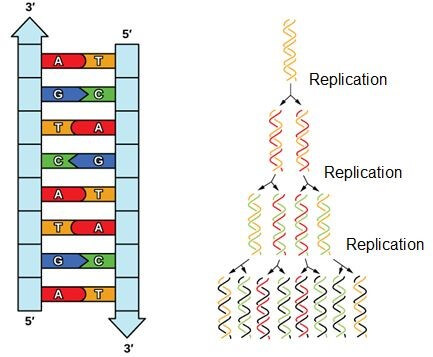
DNA replication reproduces the base pairs. Source
Storing the genetic code
The bases are grouped in 3’s called codons that code for a specific amino acid. Eg. AGT – codes for a particular amino acid. The whole genetic code stores the information for all cell types to reproduce.
Therefore the DNA holds the information for all the proteins to be created for the cell.
Mutation and Recombination
When the DNA strands are connected in its double-helix structure they don’t interact with each other. During DNA replication, different DNA segments can be spliced through gene linkage.
The process can create new combinations of traits in offspring. If the protein helps the species survive, it may evolve over time.
However, some mutations may be non-beneficial which result in the creature not passing on its DNA. DNA can also repair itself over time with these processes.
Gene expression
Each cell contains a full set of genes. Cells from different tissues and organs look and behave differently. The reason is that only some of the DNA of each cell is used to make proteins.
DNA plays a role as a traffic cop for the types of proteins a cell will make. It does this with proteins in the cells that cause only specific genes to express themselves.
Conclusion
DNA structure is easy to understood by starting from its smallest units and moving to its largest form.
In the next article, we’ll look at the full form of human DNA.
Key terms
| Term | Meaning |
| DNA (deoxyribonucleic acid) | Nucleic acid that transmits genetic information from parent to offspring and codes for the production of proteins |
| Nucleotide | Smallest unit of nucleic acids |
| Double helix | Structure of two strands, twisted around an axis like a twisted ladder |
| DNA replication | Process during which a double-stranded DNA molecule is copied to produce two identical DNA molecules |
| Base pairing | Nitrogen bases of the DNA molecules bond with one another |
Resources:
- https://www.nature.com/scitable/topicpage/discovery-of-dna-structure-and-function-watson-397
- https://www.khanacademy.org/science/biology/classical-genetics/molecular-basis-of-genetics-tutorial/v/alleles-and-genes
- https://www.livescience.com/10142-lost-letters-reveal-twists-discovery-double-helix.html


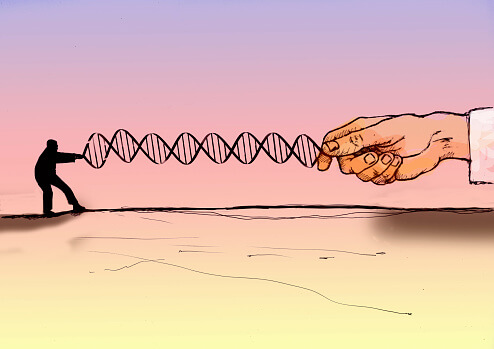 DNA passes on genetic information through its chemical structure and molecular behavior.
DNA passes on genetic information through its chemical structure and molecular behavior. 